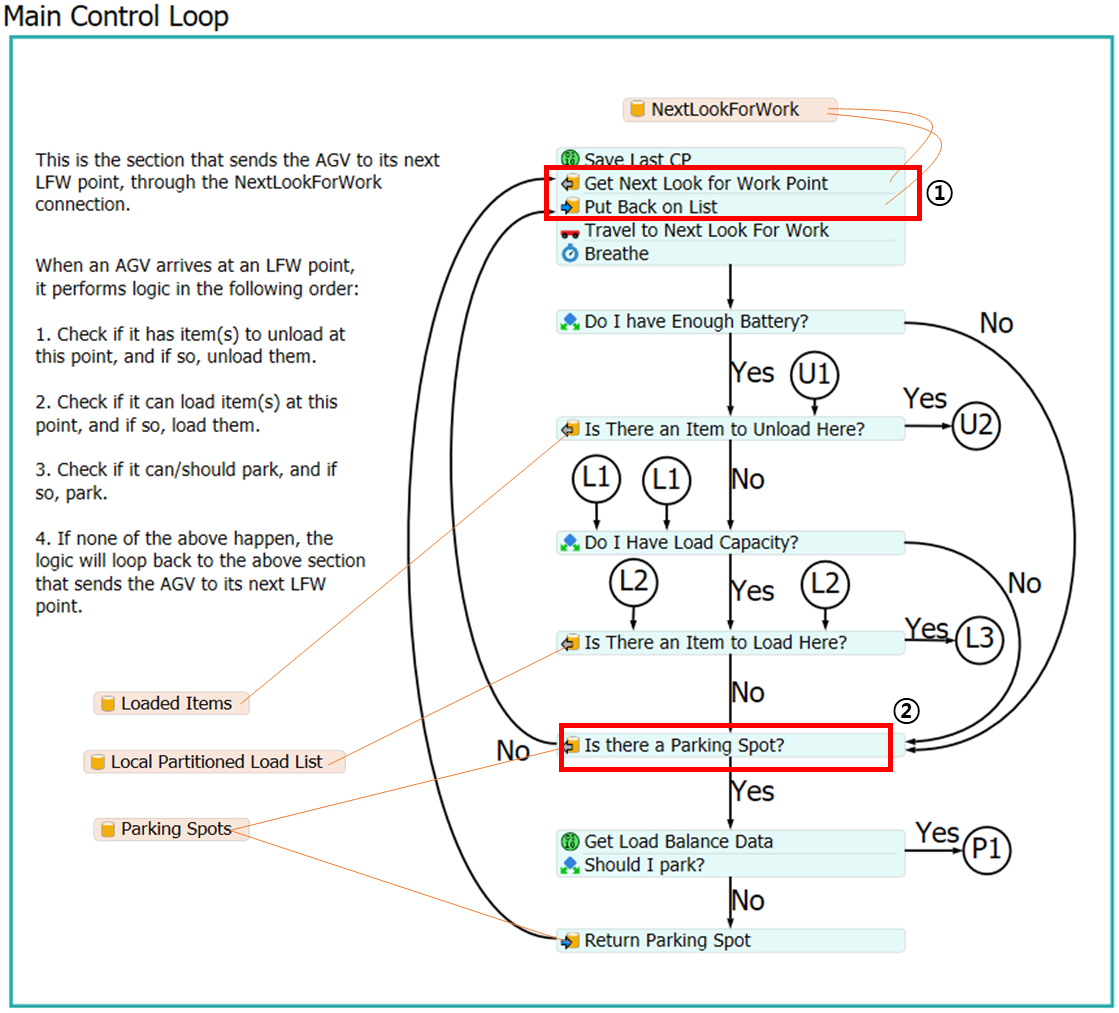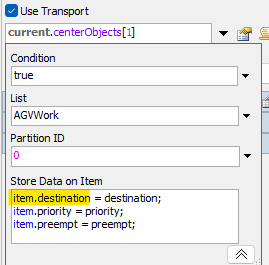(I use FlexSim 20.2.3 version)
Now, I'm studing AGV Process Flow, But I don't know the function of a few activities.

① In Main Control Loop Flow Chart, I don't know why That activities put the token back in the NextLookForWork list as soon as they pull token from the next list of views.
② In ② activity, Why does the token move to the 'No' connection even though there is a control point (Parking Spot) connected to the park point?

③ In LookForWork Forwarding Sub Flow, What is Local Partitioned Load List for? In my AGV Process Flow Example, I didn't connect of LookForWork connection.

④ In Parking Flow Chart, The token doesn't have label 'requestedItems'. Is that condition wrong?
I'm sorry for having a bad English. Also I don't have much time for studying AGV Process Flow, then My question quality may not be good. But If you let me know about that, I appreciate for it.
I hope you have a nice day. Thank you.

